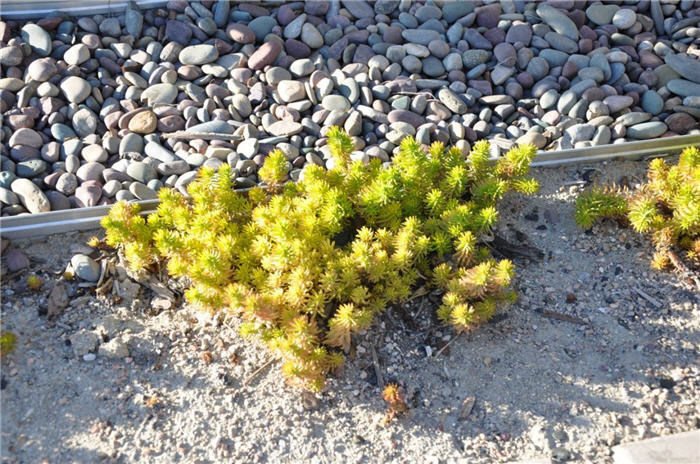| Botanical Name: Sedum rupestre 'Angelina' | |
| Common Name: Angelina Stonecrop |

-
Anatomy
-
Culture
-
Design
Plant Type
Ground cover, Perennial, Succulent
Height Range
Under 1'
Flower Color
Pink
Flower Season
Spring, Summer, Fall
Leaf Color
Yellow Green, Orange
Bark Color
n/a
Fruit Color
n/a
Fruit Season
n/a
Sun
Full, Half
Water
Low
Growth Rate
Slow
Soil Type
Sandy, Clay, Loam, Rocky, Unparticular
Soil Condition
Average, Poor, Well-drained, Dry
Soil pH
Neutral
Adverse Factors
n/a
Design Styles
English Cottage, Japanese, Mediterranean, Ranch, Spanish
Accenting Features
Unusual Foliage
Seasonal Interest
Spring, Summer, Fall
Location Uses
Perennial Border, Parking Strip, Patio, Raised Planter, Walls / Fences, With Rocks
Special Uses
Container, Mass Planting, Small Spaces, Hanging Baskets
Attracts Wildlife
Butterflies
Information by: Stephanie Duer
Photographer:
Photographer:
-
Description
-
Notes
Brilliant chartreuse-yellow, needle-like foliage forms a quick groundcover. Adds cheery color to containers, dry slopes and flowering borders, as well as being a good bulb cover. In winter, foliage turns orange in northern climates. Perennial.
As a group, sedums prefer well-drained soils, including sandy-loam, clay-loam, or rocky soils, as long as it is well drained. In nature, most sedums occur in light shade or partly sunny sites, while a few are also well-adapted to full sun situations. They can tolerate both drought conditions or more frequent watering, but the key is good drainage. Their xeric nature makes sedums popular for use in rock gardens, roof gardens, wall gardens, and living wreaths.